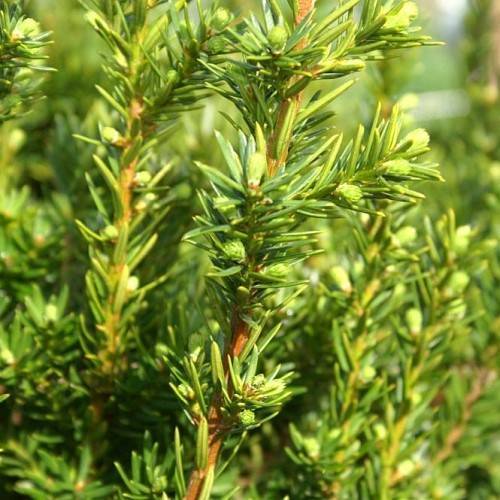
yew
Taxus media 'Taunton'
Cycle:
Perennial
Watering:
Average
Hardiness Zone:
4 - 8
Flowers:
Flowers
Sun:
Full sun,part shade
Cones:
Yes
Leaf:
Yes
Growth Rate:
Low
Maintenance:
Low
Poisonous To Humans:
Yes
Poisonous To Pets:
Yes
Drought Tolerant:
Yes
Salt Tolerant:
Yes
Thorny:
Yes
Care Level:
Medium
watering
Yew (Taxus media 'Taunton') should be watered when the top 2 inches of soil feels dry or when the plant begins to droop. It is important to avoid overwatering, as this could cause root rot. Water the yew thoroughly until the water runs out of the bottom of the pot—about 2-3 times per week during the summer months and every 10-14 days during the winter months. When the weather is especially hot, you may need to water more often. Fertilize once per month during growing season with an organic fertilizer.
sunlight
Yews prefer partial sun and will grow best in areas with 4-6 hours of direct sunlight per day. This species of yew is evergreen and thrives in climates with cooler temperatures, preferring temperatures between 55 to 70 degrees Fahrenheit. For proper growth, Yews need full sun in the morning, but should be partially shaded from the afternoon and evening sun to prevent the leaves from wilting and overheating. This species should not be exposed to extreme heat as it can lead to leaf scorching or leaf burn.
pruning
Yew (Taxus media 'Taunton') should be pruned in late winter, around February or March, with the goal of creating a robust and symmetrical form. A light pruning can be done at any time of the year but heavier pruning should be reserved for the late winter. With successive years of pruning, light shaping can be done but the goal should be to remove dead or damaged branches. If the yew has become too tall or wide, pruning back the sides up to 1 third of the flowering height can safely be done to keep the plant in shape. When pruning, always remove branches from areas of thicker growth and keep the buds facing outwards from the centre of the plant. Pruning controls yew's shape and size and can reduce plant vigour.
